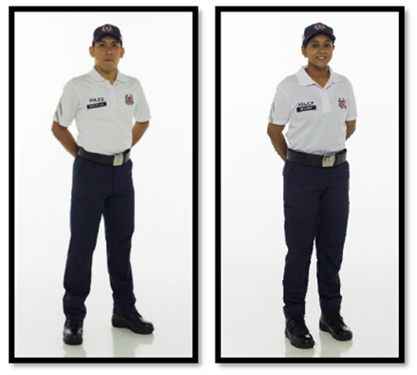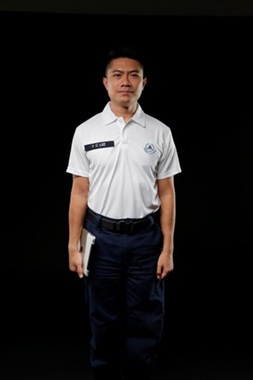FAQs
Participating in SGSecure
You can play your part in the SGSecure movement by:
- Staying Alert – Be vigilant and look out for suspicious objects, persons or behaviour. Call 999 or SMS 71999, or submit a report through the SGSecure app if you see anything suspicious
- Staying Strong – Familiarise yourself with the “Run, Hide, Tell” and Improvised First Aid Skills “Press, Tie, Tell” advisories on what to do in a terror attack. Share these advisories with your family and friends, and help those around you if you can in times of need.
- Staying United – Take the effort to bond with those around you, treat each other with trust and respect, and ensure that we are not driven apart by the terror threat. In the event of a terror attack/ security incident, keep calm and obtain latest information from official sources. Do not speculate or spread misinformation/ disinformation, only share verified information from official sources.
For those who are keen to take on a hands-on role, you can pick up life-saving skills from training courses (e.g. CPR/AED, First Aid, Psychological First Aid) and volunteer in your community.
SCDF has a free Responders Plus Programme (RPP) that covers skills such as First Aid, CPR, and Fire Fighting.
More details can be found at the SCDF's website: Responders Plus Programme (RPP) | SCDF
You can consider joining PA's volunteer schemes in emergency preparedness by registering your
interest at the PA website:
https://www.pa.gov.sg/our-programmes/emergency-preparedness/
For organisations which are keen to contribute to SGSecure, please contact MHA at the
following webpage:
https://www.sgsecure.sg/contact-us
Soft copies of SGSecure advisories and publications are available in the 'Resources' section of the SGSecure website, at https://www.sgsecure.sg/resources
SGSecure House Visits
| Attire of SPF officers | Attire of SCDF officers |
 |
 |
Officers from the SPF and SCDF conducting the SGSecure House Visits will not ask residents for sensitive personal details pertaining to credit card number, SingPass details, NRIC number, etc.
During the house visit, SPF/ SCDF officers will share on key SGSecure advisories using the SGSecure House Visits brochure as shown below, if residents are home. You may also learn more about SGSecure through our resources.
.png?sfvrsn=6aa3d40e_0)
Engagement materials for households where resident(s) is/ are not at home
For households where resident(s) is/ are out during the house visit conducted by SPF/ SCDF officers, officers will leave a copy of the SGSecure house visit brochure (as above) and an accompanying SGSecure note to encourage them to read the information on the brochure, visit the SGSecure website to find out more about SGSecure and what they can do to keep Singapore safe from Terrorism. Residents can also keep a lookout on any upcoming SGSecure related events like SGSecure Roadshow on the SGSecure website or MHA social media pages.
.png?sfvrsn=c4fca662_0)
SGSecure Responder’s Network (SRN)
More information on RPP can be found at this link: Responders Plus Programme (RPP) | SCDF
To date, there have not been instances of good Samaritans being sued in Singapore for trying to save a life by applying CPR.
Additionally, insurance coverage for medical claims is provided for registered Responders.
The SGSecure app could also be used to:
- Receive important broadcast messages from the authorities during major emergencies;
- Send videos, photos, messages to the authorities to provide information on security-related threats you have witnessed;
- Seek assistance from the authorities during an emergency; and
- Receive alerts and updates on security-related MFA Travel Advisories, based on MFA's RSS feed.
SGSecure App
When the Personal SOS feature is activated, the SGSecure app will generate a standard SMS template for the user to send, containing a link that will allow the Police to access the user’s approximate location via the SGSecure app. The user can edit the SMS before sending it out. He/she can also use the feature to send the SMS to three of his/her pre-determined SOS contacts, to enable them to access his/her location.
A step-by-step tutorial is also provided within the SGSecure app.
The Personal SOS location access can be deactivated by the user at any time, or by the Police, when the incident has concluded.
During a situation where emergency Police assistance is required, SGSecure app users should still call ‘999’ when possible. This ensures prompt Police response, as it allows direct communication between the user and the Police. In such instances, the Police may also advise the user to activate the Personal SOS feature in the SGSecure app as necessary e.g. if there is a need to access the user’s approximate location.
Depending on the type of emergency reported, the Police, ambulances or fire rescue personnel may be despatched as necessary.
If the SMS has been received by the Police, they will contact the sender to confirm that no assistance is required before closing the case. Police may arrange to physically meet with the sender, for verification purposes.
Do note that all emergency messages to the Police are treated seriously and resources will be committed to look into such emergency messages. Action may be taken against users who abuse the Personal SOS feature.
Users are reminded that once activated, the SOS SMS is sent to the Police and up to three of the user’s pre-determined SOS contacts. Apart from responding to questions from the Police, users should also respond promptly to the SOS contacts, to update them of the situation.
This facilitates the sending of emergency messages to the Police’s SMS 71999 service as well as the user’s pre-determined SOS contacts quickly, and with a link that allows the recipients to determine the sender’s approximate location.
The receiver may click on the link in the SMS, which will launch the SGSecure app to view the sender’s location and the receiver can use text messaging to contact the sender. Should a receiver be unable to get a response from the sender for 20 minutes, the receiver may call ‘999’ to contact the Police.
For other SGSecure-related issues, you may send an email to MHA_Feedback@mha.gov.sg or call 1800-3569091 during office hours.
Other FAQs
SGSecure is a national movement to sensitise, train and mobilise our community to play a part to prevent and deal with a terrorist attack. It is how the whole of Singapore can come together in response to the terror threat, and safeguard our way of life.
SGSecure contains three core components, namely:
- Vigilance: Staying Alert to prevent a terrorist attack and to keep your family, friends and yourself safe in the event of a terror attack.
- Cohesion: Staying United through building strong ties in the community; cherishing and safeguarding Singapore’s racial and religious diversity and harmony so that we can stand together in peacetime and crisis; and
- Resilience: Staying Strong by being ready to deal with a crisis, being resilient as individuals and as a community, to help each other bounce back quickly after a terror attack.